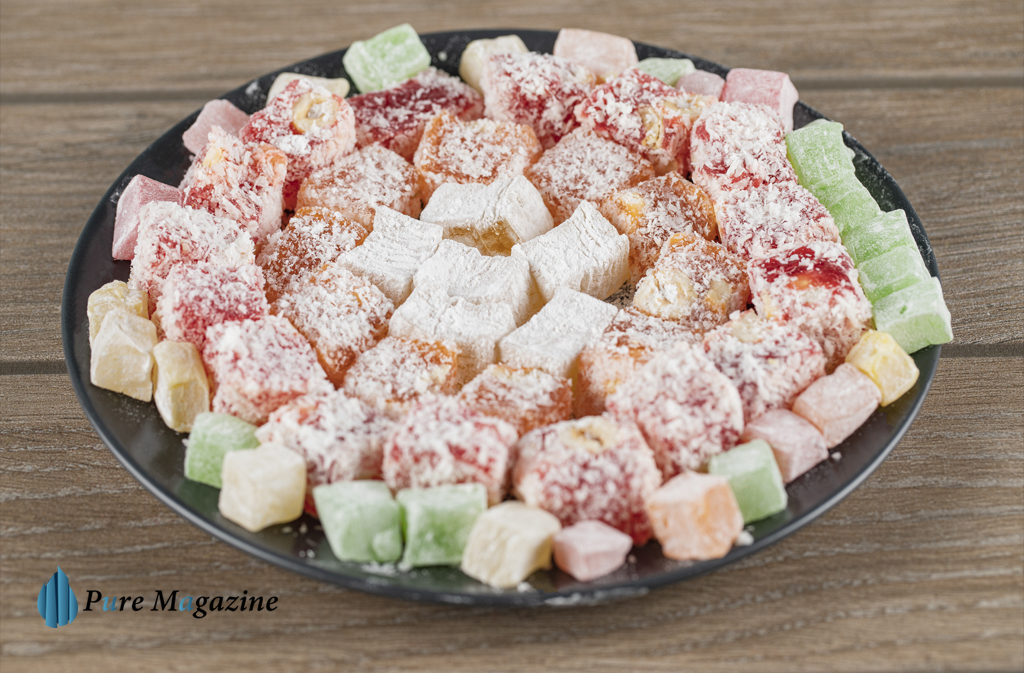Turkish delight is one of the world’s most famous sweets, loved for its soft texture and sweet, aromatic flavor. Known for centuries in the Middle East and beyond, it has captured the hearts of people across the globe. With its colorful appearance and wide range of flavors, this dessert is as beautiful as it is delicious.
The story of turkish delight is as interesting as the treat itself. Originating in Turkey, it was once considered a luxurious snack served to royalty. Over time, it became a symbol of hospitality, often offered to guests during special occasions. Today, it continues to be enjoyed by people of all ages in many countries.
The Origins of Turkish Delight
The history of turkish delight dates back hundreds of years. Many believe it was first created during the Ottoman Empire. According to stories, a sultan wanted a dessert that was softer and sweeter than the hard candies of the time, leading to the creation of this unique treat.
Originally, natural ingredients like honey, molasses, and flour were used to make it. Over time, the recipe changed to include sugar and starch, giving it a smoother texture. The popularity of this sweet spread quickly, becoming a favorite in palaces and homes alike.
How Turkish Delight is Made
Making turkish delight is both an art and a science. The basic recipe involves boiling sugar and water, then adding starch to create a soft, jelly-like texture. Flavorings such as rosewater, lemon, or orange are added to give it a unique taste.
Once cooked, the mixture is poured into molds, cooled, and cut into small cubes. To prevent sticking, the pieces are rolled in powdered sugar or a mix of sugar and cornstarch. This process not only adds sweetness but also gives the treat its signature look.
Popular Flavors of Turkish Delight
While rose-flavored turkish delight is the most traditional, there are many other varieties. Some are flavored with citrus fruits, while others use nuts like pistachios, hazelnuts, or almonds. Each flavor offers a different experience, making it hard to choose just one favorite.
Modern versions also experiment with chocolate coatings or exotic spices. These variations show how this traditional sweet can adapt to changing tastes while keeping its original charm. Whether you prefer the classic or the modern, there is a flavor for everyone.
Turkish Delight in Culture and Tradition
In Turkish culture, turkish delight holds a special place. It is often served during holidays, weddings, and family gatherings. Offering it to guests is considered a warm gesture of hospitality.
It also appears in literature and films, adding to its cultural importance. For many, tasting it is more than just enjoying a sweet—it is experiencing a piece of history and tradition. This makes it more meaningful than ordinary candy.
Health Aspects of Turkish Delight
Like most sweets, turkish delight should be enjoyed in moderation. It is high in sugar, but it is also free from heavy fats found in some desserts. This makes it a lighter option for those who want a small indulgence.
Some variations include nuts, which add protein and healthy fats. Choosing versions with natural flavors and fewer additives can make it a slightly healthier treat. However, balance is always key when enjoying sweets.
How to Enjoy Turkish Delight
There are many ways to enjoy turkish delight. It can be eaten on its own as a quick snack or served with tea or coffee. The soft texture and sweet taste pair perfectly with warm drinks, creating a comforting experience.
It can also be used in baking or as a topping for ice cream. This gives desserts a unique flavor and texture. Trying it in different ways can help you appreciate the versatility of this treat.
Buying and Storing Turkish Delight
When buying turkish delight, look for fresh, high-quality products. The texture should be soft but not sticky, and the flavor should be rich and balanced. Freshness makes a big difference in the taste.
Store it in a cool, dry place, away from sunlight. Keeping it in an airtight container will prevent it from drying out or becoming too soft. Proper storage helps maintain its flavor and texture for longer.
The Global Popularity of Turkish Delight
Although it began in Turkey, turkish delight has become popular worldwide. Many countries have their own versions, sometimes with unique twists on the original recipe. This global love shows how timeless and adaptable it is.
Tourists often buy it as a souvenir when visiting Turkey. It is a sweet reminder of their trip and a way to share the taste of Turkish culture with friends and family back home.
Conclusion
Turkish delight is more than just a sweet—it is a piece of history, a symbol of hospitality, and a treat that has stood the test of time. With its rich flavors, soft texture, and cultural importance, it continues to charm people around the world.
Whether you enjoy it in its classic form or try new variations, turkish delight offers a taste experience like no other. Its blend of tradition and sweetness ensures it will remain a favorite for generations to come.

Frequently Asked Questions about Turkish Delight
Q1: What is Turkish delight?
Turkish delight is a soft, chewy sweet made from sugar, starch, and flavorings. It often comes in cube shapes and is coated with powdered sugar or cornstarch to prevent sticking.
Q2: Where did Turkish delight originate?
Turkish delight originated in Turkey during the Ottoman Empire and has been enjoyed for centuries as a popular treat.
Q3: What flavors are common in Turkish delight?
Traditional flavors include rose, lemon, and orange. Modern varieties may include pistachio, hazelnut, almond, chocolate, or even exotic spices.
Q4: Is Turkish delight healthy?
It is high in sugar, so it should be eaten in moderation. Versions with nuts can offer some nutritional benefits, but it is still considered a sweet treat.
Q5: How should Turkish delight be stored?
Store Turkish delight in an airtight container in a cool, dry place. This helps keep it fresh and prevents it from becoming too soft or too hard.
Visit our website: Pure Magazine


